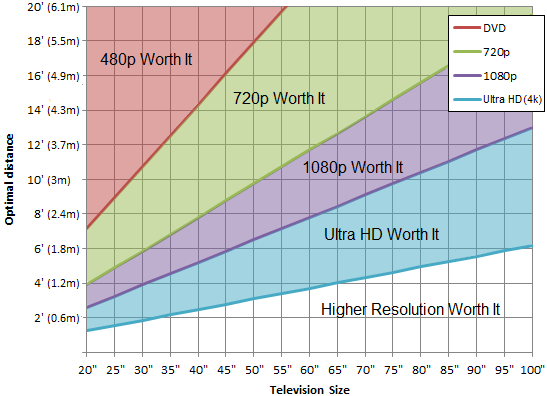
對一般的客廳來說,大概六十五寸以上電視才能感覺到高清的好處。
現在超高清隻是一代技術,四年後肯定會更好。 所以現在買六十五寸以下還是買1080p
四年後超高清流行時,再入下一代的超高清電視
With Netflix already encoding 4K content at 15.6Mbps today, and with the expertise they have in encoding and the money they spend on bandwidth, they will get the bitrate lower over time. Some observers think it might go down to 10-12Mbps, but that would only be possible down the road and at 24/30 fps, not 60 fps. If you want 60 fps, it’s going to be even higher. But even if we use the 10-12Mbps number, no ISP can sustain it, at scale. So while everyone wants to talk about compression rates, and bitrates, no one is talking about what the last mile can support or how content owners are going to pay to deliver all the additional bits. The bottom line is that for the next few years at least, 4K streaming will be near impossible to deliver at scale, even at 10-12Mbps, via the cloud with guaranteed QoS.
When it comes to the percentage of consumers in the U.S. that have Internet speeds capable of getting 4K content, with a threshold of 15Mbps, many are using Akamai’s data incorrectly. Multiple media outlets have said that, “Akamai says 19% of U.S. homes now can sustain the average 15 Mbps broadband speeds necessary to stream 4K/Ultra HD video.” That is NOT what Akamai said, nor what their data shows. Akamai’s data from their State Of The Internet Report isn’t breaking down what percentage of U.S. households have 4K ready connections, but rather speaks to the percentage of unique IP addresses from the United States that connected to their platform during the third quarter that had average connection speeds over 15 Mbps. However, there’s no direct correlation between unique IP addresses and households.